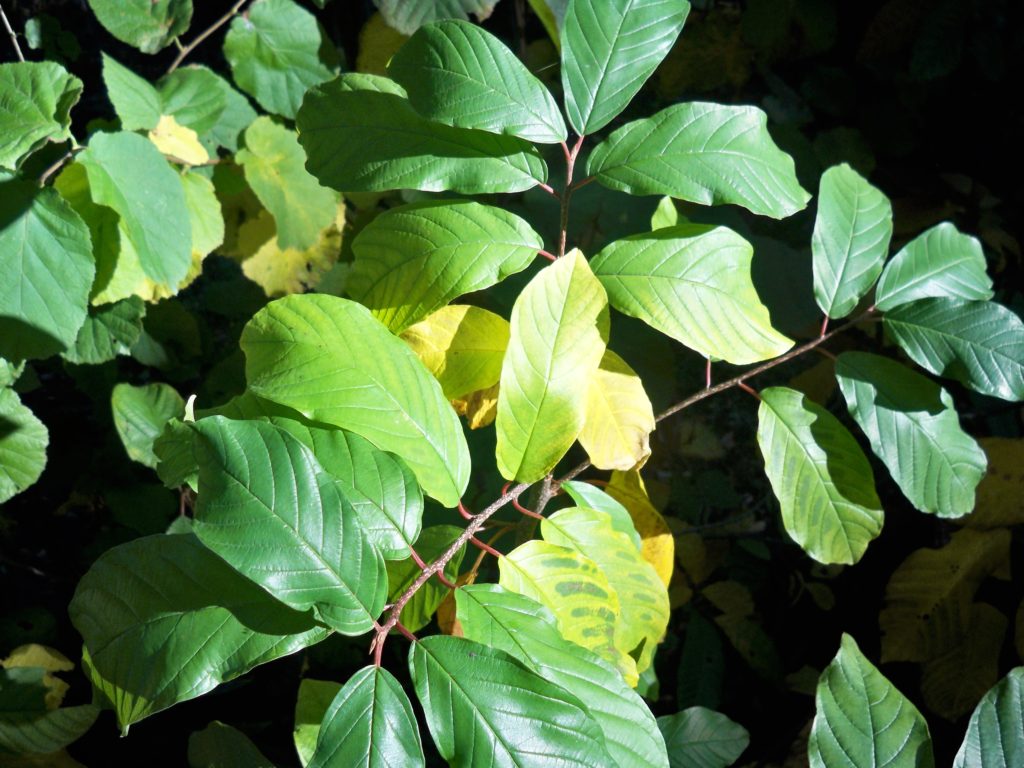When attempting to diagnose a nutrient deficiency, trees should be inspected for visual symptoms. The following explores some of the symptoms associated with boron, calcium, copper, iron, magnesium, and manganese deficiencies, and how each type of deficiency affects deciduous trees, and conifers.
Boron Deficiency
Boron deficiency is one of the most common micro-nutrient limitations found in trees. It occurs most frequently in trees growing in soils that have been altered or disturbed as a result of excessive fertilization, liming, leaching, or erosion.
Deciduous Trees:
In deciduous trees, the youngest leaves are the first to be affected. Younger leaves, and newly emerging leaves are often stunted in their development. They tend to be thick, brittle, and small in diameter. Occasionally, younger leaves may become malformed, curling upwards. Boron deficiency renders leaves more susceptible to scorching, blistering, or bronzing.
Conifers:
Conifers with boron deficiencies may be stunted, with affected plants developing a shrub-like appearance. Necrotic blotches will form on buds, resulting in the death of terminal and some lateral buds. Shoot tips will likely be bent. Boron deficiency may also result in the death of root tips, which prevents root expansion.
Calcium Deficiency
Calcium is one of the most important macro-nutrients in trees. It is involved in numerous cellular processes, and plays an integral role in root development. Calcium deficient trees are common, with the limitation especially prevalent in fruit trees.
Deciduous Trees:
Calcium deficiency first appears on newly emerging leaves. Deficient leaves become chlorotic and small, with many developing necrotic tips. Affected trees will show terminal dieback. They may also experience significant root loss. As root tips die back, trees become unable to absorb sufficient water and nutrients, causing them to decline.
Conifers:
In conifers, symptoms of calcium deficiency are most severe in the upper crown’s youngest foliage. Terminal branches are often stunted. Affected needles may hook at the tips. As the deficiency increases, secondary needles may be distorted or killed.
Copper Deficiency
Copper is required by trees in small quantities. As such, copper deficiency seldom occurs. It appears most frequently in trees planted in locations with leached sands or soils.
Deciduous Trees:
Symptoms of copper deficiency include early termination of shoot growth, resulting in defoliation and significant shoot dieback. Affected trees will often develop a bushy appearance, resulting in a condition called witches broom. Witches broom occurs when buds are released below dead shoots. Terminal internodes are often stunted. The tree’s upper leaves may exhibit interveinal chlorosis, as well as marginal scorching and necrosis.
Conifers:
Conifers experience a yellowing of needle tips, followed by necrosis. Needle retention is often limited in conifers with a severe copper deficiency.
Iron Deficiency
Iron deficiencies are common on trees and shrubs growing in alkaline or poorly drained soils. Plants with root problems caused by mechanical injury, root loss, or microorganisms may also exhibit symptoms of iron deficiency.
Deciduous Trees:
On deciduous trees, symptoms of iron deficiency are most pronounced on newly emerging leaves. New leaves may be stunted, appearing smaller with necrotic spotting. Younger leaves will turn yellow, and feature narrow green veins. Older basal leaves will remain a darker green color. Exposed leaves are more susceptible to bleaching, and may succumb to apical or marginal scorch. Shoots are generally normal in length, but short in diameter. Twig and branch dieback will occur in trees with a severe iron deficiency, resulting in significant defoliation throughout the tree’s crown.
Conifers:
In affected conifers, the cotyledons of seedlings will remain green. Cotyledons are the first leaves that seedlings produce. Subsequent growth will likely be stunted and chlorotic. Older needles, and the lower crown of conifers will remain green.
Magnesium Deficiency
Magnesium is a major constituent of the chlorophyll molecule, which stimulates growth in trees. Magnesium deficiency is one of the most common of all nutritional limitations, and can often be found in deciduous trees and conifers.
Deciduous Trees:
In deciduous trees, older leaves are affected first. Leaves may show interveinal and marginal chlorosis. As the deficiency increases, leaves become thin and brittle. Leaves will eventually exhibit interveinal reddening, with interveinal necrosis forming late in the growing season. Magnesium deficient trees often experience a premature shedding of their leaves.
Conifers:
In affected conifers, needle tips become discolored, transitioning from a blue-green color to an orange or red shade. In mature conifers, older needles and needles in the lower crown are the first to exhibit symptoms of a magnesium deficiency.
Manganese Deficiency
Manganese deficiencies are occasionally observed on trees native to acidic soils that have been planted in alkaline or highly leached soils. It may also occur in trees that form poor root systems.
Deciduous Trees:
In deciduous trees, symptoms of a manganese deficiency appear first on older leaves. Leaves will exhibit interveinal chlorosis, with leaf veins remaining green while the internodes turn pale green or yellow. Younger leaves will be smaller in diameter. Necrotic spotting may occur between the veins, and along the margin of younger leaves. Affected leaves often crinkle and roll upwards before dropping prematurely. Die back of shoots, and branches may occur.
Conifers:
A yellowing of needles occurs, followed by significant browning. Affected conifers will exhibit poor needle retention, with twigs and branches experiencing die back as the deficiency increases.


